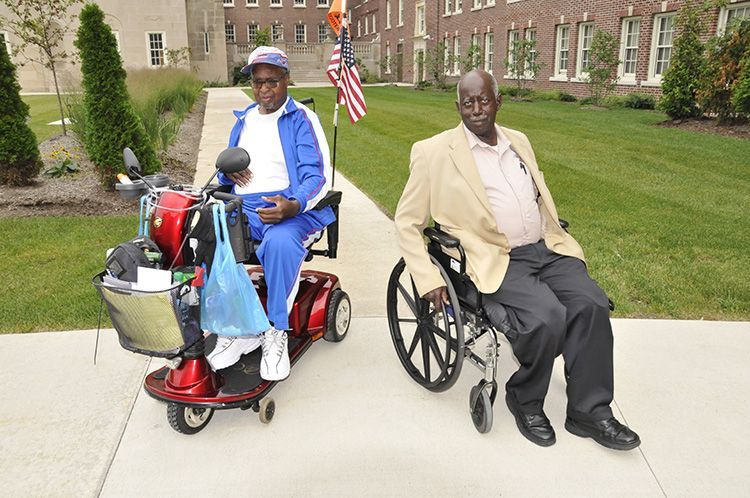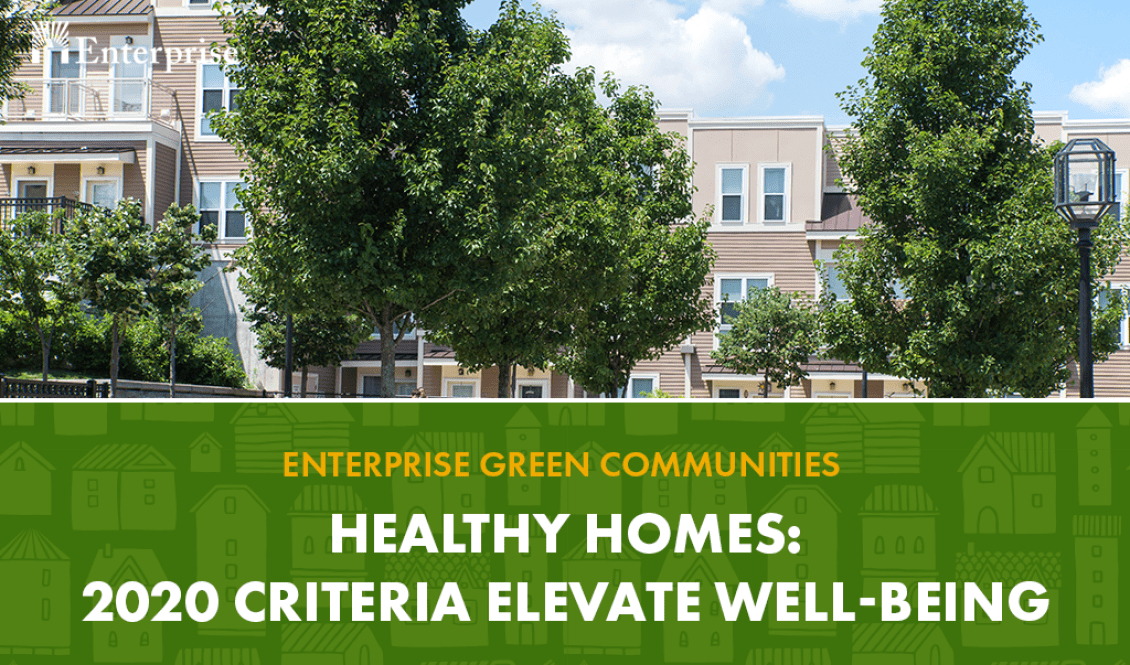This blog is part of a series exploring themes critical to affordable housing development and central to the 2020 Enterprise Green Communities Criteria: integrative design, path to zero energy, water and resilience.
The ongoing Covid-19 pandemic has underscored the importance of access to health care – and demonstrated why every sector that influences social determinants of health must join the fight to eliminate health disparities.
Affordable housing developers play a critical role in this fight because your work directly or indirectly affects the health, well-being and even the lifestyles of the people who call your properties home. In fact, studies have found that 80% of our health is influenced by our behaviors as well as the social, economic and environmental conditions in which we live, work and play.
Asthma is one of the most common chronic illnesses in the United States, especially among children. In many cases, environmental triggers from poor housing conditions such as leaks, mold and pests can worsen symptoms, which can be traumatizing and lead to higher health care costs, missed days of school and lost workdays for caregivers. Poor housing conditions can expose residents to lead paint, radon and other hazards, all of which can be mentally, physically and financially harmful.
Because our health care system is designed to treat an individual’s condition, it provides treatments for asthma symptoms. But it’s not structured to write a prescription for poor air quality or other root causes that exacerbate asthma symptoms.
Factors such as affordability, stability and quality put housing at the root of many illnesses and diseases. Because of redlining, forced segregation and systemic racism, people with lower incomes and people of color are more likely to experience housing-related health disparities, with Black Americans nearly two times more likely to live in homes with serious physical problems.

Healthy Living: An Affordable Housing Cornerstone
Affordable housing developers can mitigate some of these root causes and help to lessen health inequities by building healthy living spaces for residents. Best practices include addressing indoor air quality, reducing hazards (like lead and radon), and encouraging health and well-being through design. As a developer, it may be difficult to know which practices to prioritize and how to properly implement them. Green building programs, like Enterprise Green Communities, the standard for sustainable futures, can help.
The Green Communities Criteria’s mandatory and optional Healthy Living (Category 7) requirements improve the quality of Green Communities-certified buildings by reducing exposure to toxins, managing the indoor environment, and promoting health through design. The introduction of evidence-based public health practices such as the Health Action Plan underscore the importance of listening to residents and prioritizing their health needs as developers make building design decisions.
Healthy Living: What’s New?
One of the most significant changes to the 2020 criteria, the latest iteration of the criteria, is that every project that receives Green Communities certification also will be certified to the WELL Building Standard. This collaborative effort leveraged the technical expertise of both Enterprise and the International WELL Building Institute to ensure the criteria consider health from all angles. Dual certification occurs automatically and does not require adding any new consultants to your team.
Additionally, the 2020 criteria help to advance and support healthy practices. In the newest iteration of the criteria, common spaces as well outdoor areas within 25 feet of the building must be smoke free to mitigate secondhand smoke exposure. Points can be earned if a project team decides to go further and institute a building-wide smoke-free policy. The 2011 criteria first introduced the policy as an optional criterion and project teams continually prioritized this important health issue; over half of the projects certified to the 2015 version of the criteria implemented building-wide smoke-free policies.
All project teams will pick one criterion from the Healthy Living Environment category that promotes health through design: Universal Design, Active Design or Healing-centered Design. These three criteria move beyond necessary prevention of hazards and toxins toward creating an environment that makes it possible for residents to not just live, but to thrive.
For example, the Universal Design criterion promotes aging-in-place features to help prevent worsening health issues that can lead to increased isolation and premature moves into assisted living or nursing facilities. As baby boomers age, the need for affordable housing that allows individuals to age in place is increasing as demand outpaces supply. Housing for aging adults must support a more independent, active lifestyle.
Housing stability has never been more vital than during the Covid-19 pandemic. By both preventing health hazards and creating homes that promote healthy living, affordable housing developers can help strengthen community resiliency and ensure an equitable recovery.

Resources
- Enterprise’s Health Action Plan is a process for identifying and addressing the health outcomes of residents through affordable housing design and development.
- Enterprise's Aging-in-Place toolkit supports affordable housing owners and developers who seek to assess and respond to the needs of their aging residents through the built environment.
- The U.S. Environmental Protection Agency, Clean Air Act Title IV—Noise includes sections on abatement, health effects, regulated noise sources, and other useful guidance related to noise as a pollutant.
- New York City published Active Design Guidelines for a more livable and hospitable city, promoted as part of former Mayor Michael Bloomberg’s Design + Construction Excellence Initiative.
- To learn more about healing-centered design, we recommend Shawn Ginwright’s article, “The Future of Healing: Shifting from Trauma Informed Care to Healing Centered Engagement.
